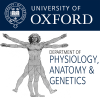A hundred years on: 21st Century Insights into Human Oxygen Homeostasis
In 1911, work by Haldane, Fitzgerald and colleagues revealed the extraordinary sensitivity of blood haemoglobin levels to reduced atmospheric oxygen levels, a finding that introduced the physiological concept of an oxygen sensor. This lecture outlines advances in the molecular understanding of oxygen sensing mechanisms, including the remarkable finding that all eukaryotic kingdoms use enzymatic protein oxidations coupled to proteostasis to signal oxygen levels in their cells. The physiological implications of these advances are discussed, together with the opportunities and challenges raised in the therapeutic modulation of human oxygen sensing systems.




